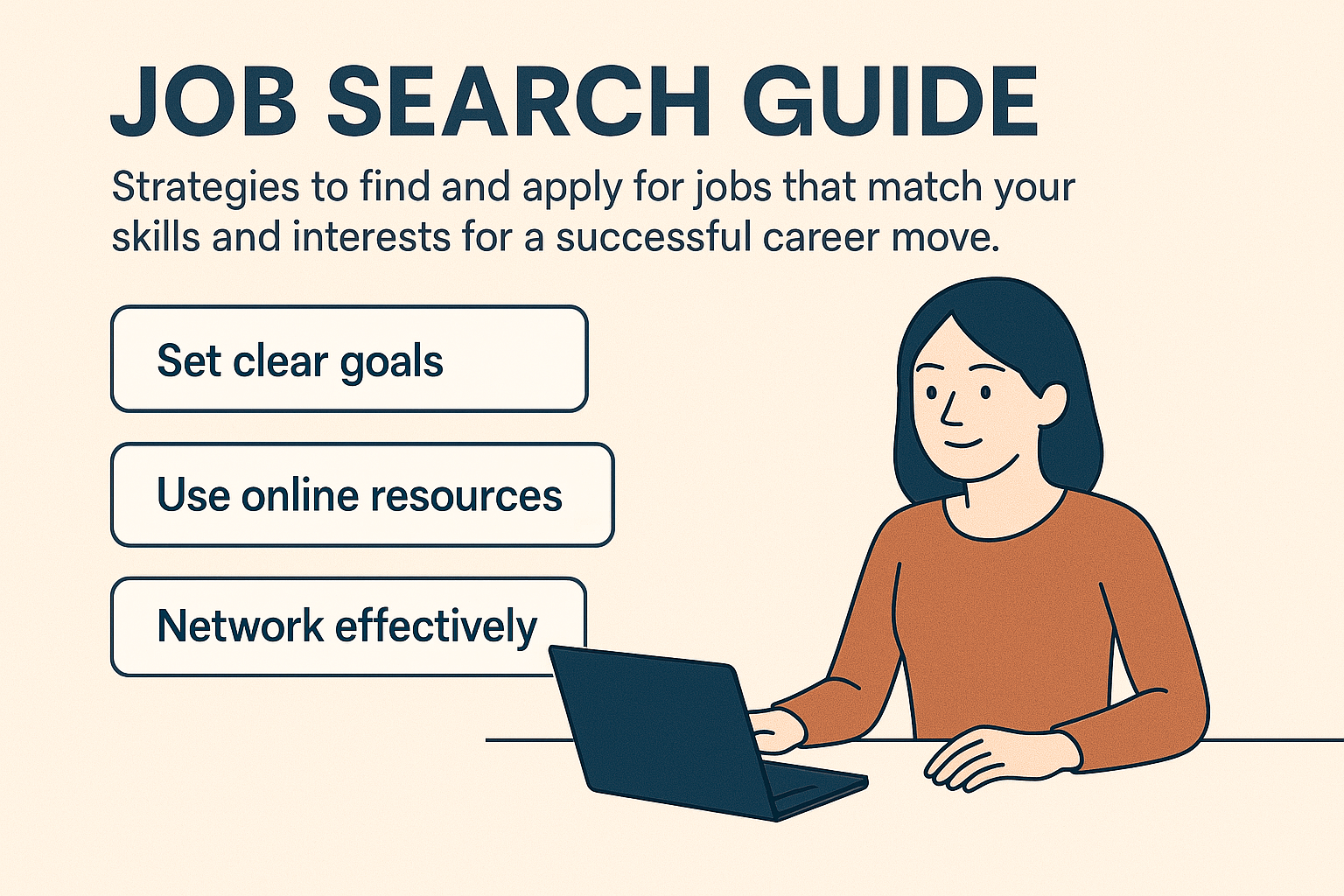Job Search Guide
Strategies to find and apply for jobs that match your skills and interests for a successful career move.


Job Search Guide
Finding the right job requires strategy, persistence, and organization. Here's how to conduct an effective job search.
Know What You Want
Before starting your search:
- Define your career goals and priorities
- Identify your non-negotiables (salary, location, culture)
- List your key skills and strengths
- Consider what industries interest you most
Job Search Channels
Utilize multiple sources to find opportunities:
| Channel | Best For |
|---|---|
| Job Boards | Volume of listings across industries |
| Company Websites | Targeted applications to preferred employers |
| Networking and discovering unlisted opportunities | |
| Recruiters | Industry-specific positions and salary negotiation |
| Networking Events | Hidden job market and direct introductions |
Optimize Your Online Presence
In today's digital world, your online footprint matters tremendously in your job search journey. Strategically update your LinkedIn profile with keywords relevant to your target positions to improve visibility in recruiter searches.
Take advantage of technology by setting up customized job alerts on major platforms to stay informed of new opportunities without constant manual searching.
Demonstrate your interest by following potential employers on social media, which not only keeps you updated on company news but may reveal insights about their culture and values. For creative and technical roles, invest time in creating or refreshing your professional portfolio to showcase your capabilities in a tangible way.
Application Strategy
Success in job applications comes from a thoughtful approach focused on quality rather than quantity. Tailor each application to highlight the specific skills and experiences that match what the employer is seeking.
Before submitting any application, thoroughly research the organization to understand their challenges, values, and industry position. This knowledge allows you to reference specific company initiatives or projects in your application materials.
Always carefully follow application instructions, as attention to detail is often the first test. Maintain organization throughout your search by tracking all applications in a spreadsheet, noting key dates, contacts, and follow-up actions.
Networking Effectively
Your professional network often provides the most valuable job leads. Reconnect with former colleagues and classmates who already know your work ethic and capabilities.
Expand your circle by participating in industry events and informative webinars where you can meet professionals with similar interests. Join and actively contribute to professional groups in your field to establish yourself as a knowledgeable participant.
Arrange informational interviews with people in roles you aspire to, focusing on learning rather than immediate job opportunities. Remember that networking works best when reciprocal—offer assistance to others before requesting help for yourself.
Following Up
Strategic follow-up can distinguish you from other candidates. Express gratitude through a personalized thank-you message within 24 hours after any interview, referencing specific conversation points.
If you haven't received a response about your application after one to two weeks, send a polite inquiry reaffirming your interest in the position. Build long-term professional relationships by connecting with interviewers on LinkedIn, regardless of the outcome.
Should you receive a rejection, view it as a learning opportunity by requesting constructive feedback. Most importantly, maintain positive relationships with all professional contacts even when not selected—the connection may prove valuable for future opportunities.
Remember that job searching is often a marathon, not a sprint. Stay organized, maintain a positive attitude, and continue developing your skills while searching for your next opportunity.